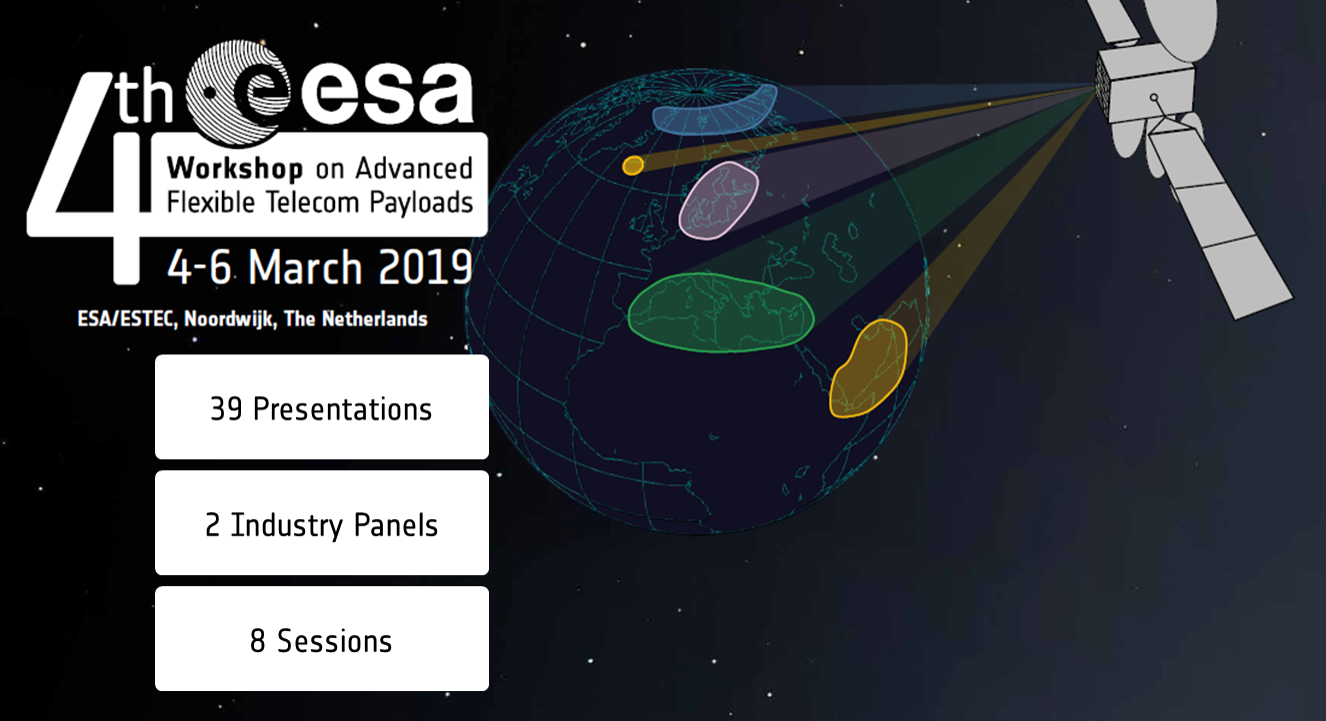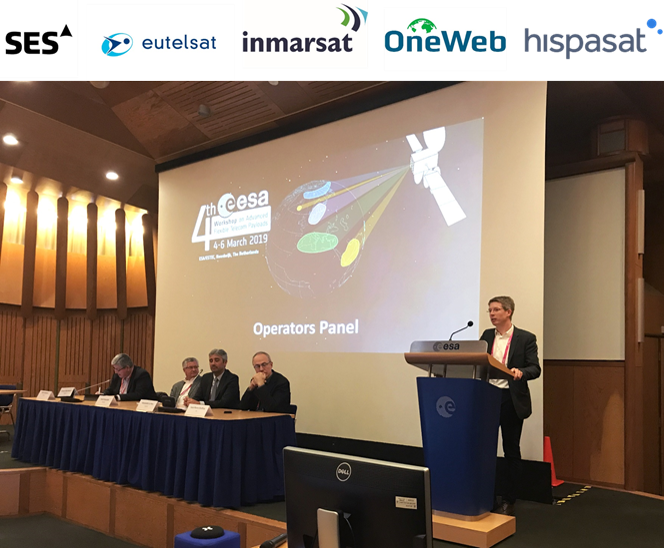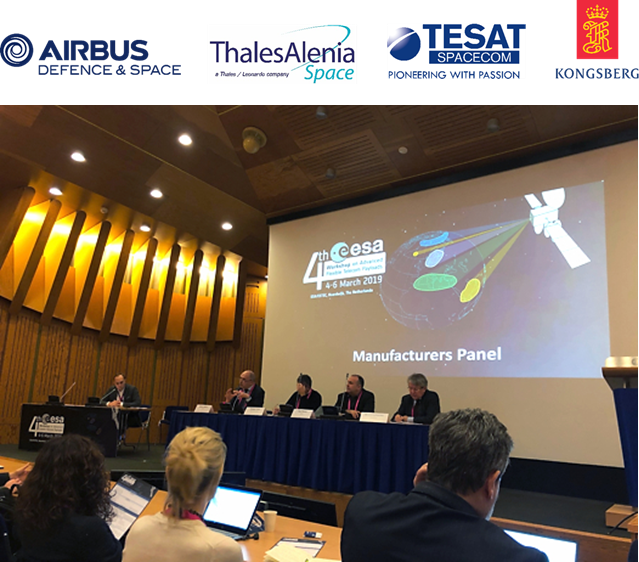ESA Workshop on Advanced Flexible Telecom Payloads 2019 - a resounding success

With 121 registrations from 21 countries, this year’s edition of the Workshop on Advanced Flexible Telecom Payloads was a resounding success.

A joint effort between ESA’s Telecommunications and Integrated Applications (TIA) Directorate and the Technical and Quality Management (TEC) Directorate, the annual workshop was a unique opportunity to present and discuss the latest technical advances in satellite communication payloads that have on board flexibility capabilities.
Spanning three days, the event kicked off with two panels bringing together operators and manufacturers. The following two days consisted of sessions and specialized presentations, covering a wide range of topics within the following areas:
- Technologies for active antennas
- Flexible payloads and innovative system solutions
- On board digital processor and associated technologies
- High power amplifiers (TWTA, SSPA), with special emphasis on their operation in flexible payloads
- Flexible RF parts, ferrite switches and filters
- Flexible photonic payloads and building blocks
- Analysis and optimization tools.
Operator Panel Highlights
One of the panellists discussed their interest in launching flexible payloads with the capability to define the mission once in orbit, in order to adjust the operation to changing needs. Such a flexibility could also enable any evolution in modulation schemes introduced through the evolution of standards for digital video broadcasting (DVB).
Digital on-board processors, both transparent and regenerative, were also mentioned as a useful tool to help increase flexibility and potentially reduce the number of gateways.

Overall, the operators are searching for a more generic/standard payload, highlighting the need for tools and strategies for efficient operation.
Manufacturer Panel Highlights
Despite the impossibility of achieving complete standardisation in the field (as some degree of customization will still be required), it was observed that there is a trend for reducing the number of microwave parts and for the use of standard building blocks.
Active antennas and digital processors were also mentioned as core areas for future flexible payloads, with optical technologies being an enabler for Virtual High Throughput Screening (VHTS), in order to handle traffic demand. Airbus expressed their intention to apply the lessons learned from the OneWeb mass production, for their future MEO and GEO satellites.


